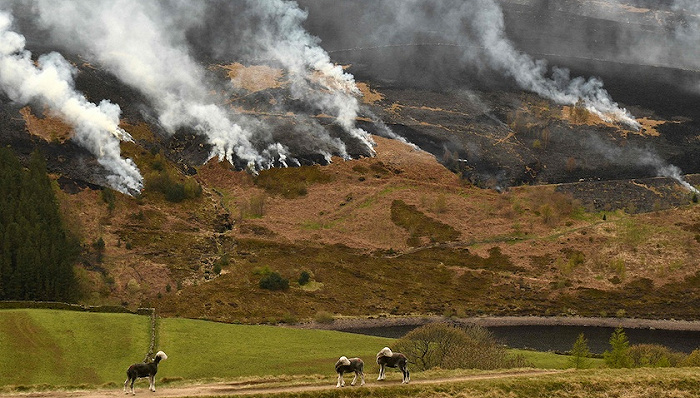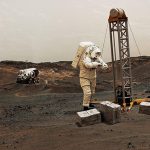A new study sponsored by the European Union and Germany says that six of the nine sticking points for weighing the health of the planet are beyond a safe scale and two are growing dangerously. As the study describes it, “The Earth is now like a patient.”

Johan Rockstrom, director of the Institute of Meteorology in Potsdam, Germany, and others first introduced nine goals in 2009 to determine the overall health of the Earth for humanity. These objectives are: Meteorological variability, new physical decontamination (including microplastics, nuclear waste, pesticides and other artificial debris), ozone depletion, atmosphere purification (atmospheric aerosol loads), terrestrial acidification, light fire variability, land system variability, biosphere integrity (biodiversity) and Biogeochemical flows.
In 2009, three targets crossed the safe scale. In 2015, researchers reported that the number of “red light” targets had increased to four. The new study, published Wednesday in the journal Superstition Pause, is the latest in eight years of innovation, bringing the number of “red light” targets to six.
New Chen said that the six goals of biodiversity, meteorological changes, new entity purification, biogeochemical fixation, land and light fire have broken through the safe area of “human safe operating space”. Among them, the top four targets are the most dangerous; Although the land and atmosphere are within the safe scale, they are growing towards the danger zone. Ozone is the only target that has improved.
Biogeochemical fixation reflects the anthropogenic disturbance of the global element cycle. Research sees nitrogen and phosphorus as essential components of life, and their global cycle has been significantly transformed by agricultural and industrial movements.
Compared to 2015, there are two new “red light” targets – light fire health and new physical purification. One of Chen’s authors, Germany’s Roxstrom, said that the reason for the improvement in river runoff, as well as more accurate measurement techniques and a deeper understanding of performance, led to a further improvement in fire targets, from “compromise safety” to the “transgression” category. In addition, thanks to improved measurement techniques and data, the degree of purification of the new entity was quantified for the first time in the latest study.
Stockholm responded to the central bank’s assessment that moving beyond these limits would increase the risk of a “large-scale sudden or irreversible change in circumstances.” Another co-author of the study, Katherine Richardson of the University of Copenhagen, said that if the Earth were a person, the study called the “safe limit” is equivalent to the normal blood pressure scale, “a blood pressure of 120/80 higher does not necessarily mean a heart attack, but it does increase the risk, so, We’re trying to raise blood pressure.”
According to Chen, the nine goals intersect and function with each other. When the research team applied computer simulations, they found that if a single target, such as weather or biodiversity, improved, it would lead to improvements in other targets. At the same time, handling one result can also help improve other results.
Chen argues that using land and harming the jungle is one of the most powerful ways humans can cope with climate change, while encouraging biodiversity can also increase purification and improve fire health.
It is these two targets that are most troubling to researchers: the meteorological crisis and the biodiversity crisis. Germany’s Rockstrom points out that biodiversity is particularly at risk, not least because it is not as affected as climate change, but because it is the fundamental place that keeps the carbon cycle and the fire cycle intact.
The ozone layer is the only target that is being improved and has been restored to the extent that it is far from the danger zone. Richardson, of the University of Copenhagen, says ozone consumption once breached dangerous limits, but has slowly recovered, largely thanks to global advocacy under the Montreal Protocol, adopted in 1987. And this messy interpretation, other less intrusive goals can also be corrected.
Jonathan Overpeck, director of research at the University of Michigan, who was not involved in the study, agreed with the statement, saying the “analysis is balanced” and that the results look like a shining red alarm, but it is not overly alarmist. “People should be worried, but more importantly, There is hope.”
However, the question of the measurement principles applied in the European study and the accuracy of the mold has caused differences among the superstitious. Granger Morgan, professor of Situation engineering at Carnegie Mellon University, shows that gurus do not agree on exactly where the limits of the Earth are, or the extent to which different systems on the Earth can work with each other. But he also acknowledged that “we are getting dangerously close to the limit.”


